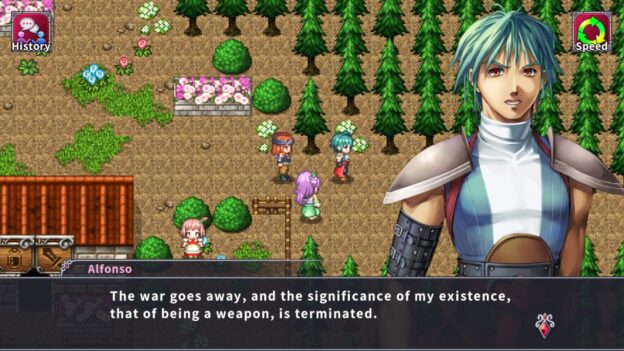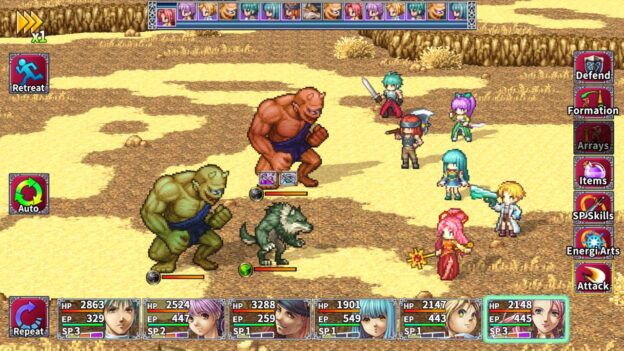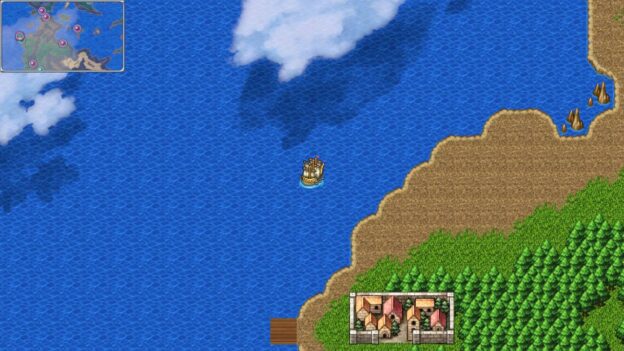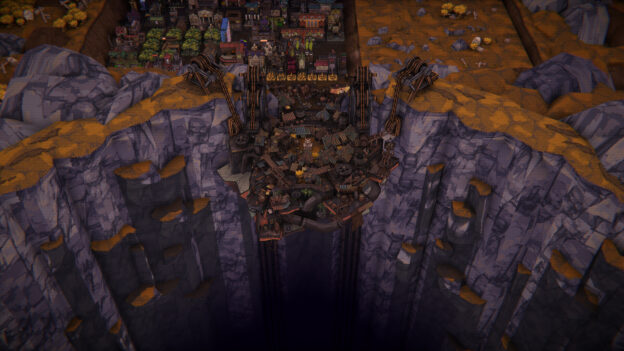Review: Alphadia III (Nintendo Switch)

While playing Aphadia III, I realized it had been a while since I covered a KEMCO-published RPG game. Well, a while by Pure Nintendo standards, where we seem to always have one queued up for a PN review. I blame the fact that I found Dragon Takers to be a pretty poor game. But leave it to the long-running Aplhadia franchise to pull me back in with this third entry in the core series. All the prior Alphaida games I’ve played have ranged from fair to very good. Where does this one land?
Even though this is the third entry, it’s a prequel, so you needn’t worry if you haven’t played the prior titles. Although new players may want to play them simply from a value perspective, as I & II together are the same price as III alone. I’d argue Neo and Genesis are even better (not to mention also less expensive). But I don’t want to overwhelm, nor waste word count on less important opinions. Alphadia III will mean more to fans, but I think it’s a fine game in its own right, whether it’s your first series entry or not.
It doesn’t have the best start, though. I found it sluggish, with too much mundane chatter interrupting the sprinkling of combat. The characters failed to leave much of an impression out of the gate. Also, in the early goings, the normal difficulty feels closer to easy. To be clear, I don’t mind an easier RPG. Depending on my mood, I might even prefer it. But if I want easy, I’ll pick easy. Thankfully, it corrects course as the game advances, which I’ll talk more about in a bit. And the characters will gradually grow on you.
You start as Alfonso, an energi clone. Yes, these are the clone wars, and what are they good for? Absolutely nothing. Amidst the national segregation and strife, Alf has an epiphany when he realizes those unresisting citizens are being killed. Noteworthy allies include another clone, Enah, an Alphadia series mainstay. Wunderkid Rafael is a further ally who leaves an impression. Though occasionally annoying, he’s a genius in energi technology. I wish the game had leaned more into that. I was excited when he described one unexpected boss encounter as the result of “electromagnetic radiation or mutagenic chemical substances,” but more often than not, the dialogue sticks to war cliches.
The trio of characters I mentioned is only half of your party. Eventually, you will have a crew of six! Finally, no more having to come up with some plot tropes to justify swapping team members to keep your party at three or four. This goes a long way towards compensating for these characters’ shortage of memorable personalities during the first half of the game, where I was recalling them more by appearance or dialect.
With your crew, you’ll be traveling the land, visiting towns, and fighting in dungeons. I like that the mini map doesn’t show you hidden paths and treasures, which makes exploration more interesting. Helpful warping also cuts down on travel time in instances when you need to backtrack and before you acquire a ship and seaplane. Dungeons (as a rule) aren’t too mazy, which is also a plus.
Earlier, I mentioned that the game began easily. Some of this might’ve stemmed from my tendency to double the encounter rate (a common feature in these games to level up quicker). But with hit points restoring after each battle, and ample gold, I was cruising in the early goings. Eventually, things evened out, as a party of six necessitated extra focus to keep the fights engaging. Even then, I wouldn’t call this game challenging (conserve your limited SP until the boss fights and your golden), but it did keep my attention. No need to pay real-world money on DLC here. I appreciate the option and respect the consistency in offering easier settings, but the game is fair enough.
In fact, the only time I failed at a fight was the very last wave of the very last boss. I don’t wanna spoil it, but it feels like Exe Create threw out balance so they could delay players seeing the end credits. A swap to easy made my second attempt successful, and saved me from spending any cash. Be sure to watch the credits for a satisfying finale and to see what post-game content you unlock. The latter will extend your playtime. It took me just under 17 hours playing to see the credits, which falls within the norm for these games.
Tied in with the challenge is a recurring observation I have with these KEMCO-published games. The battle systems impress in theory but underwhelm in reality. That proved true, to an extent, on normal difficulty, as the battles rarely felt the need to go beyond my core strategy of saving my SP skills. But that’s okay. Having a party of six alone is enough of a positive alteration when it comes to battling, and that deserves an extra shoutout.
Alphadia III is an update to a Japanese mobile game released in 2009. You won’t be tricked into thinking you’re playing something entirely new—and that’s a-okay. The two-year gap between the original and this follow-up is noticeable, with slight upticks to the visuals, some of the writing, and especially the addition of a six-member party. It’ll keep you invested even with customary looks, sounds, and routine gameplay. While not innovative, it delivers familiar fun with more pros than cons, particularly for series fans.







